Saffron seasoning is known all over the world, but not everyone had the chance to try it due to its high cost. Spice is rightfully considered one of the most expensive, as evidenced even by the corresponding entry in the Guinness Book of Records. The price is due to the laborious work of collecting saffron. The whole procedure is manual, and the output from the raw materials is minimal.
Material Content:
Saffron - what is this seasoning?
Saffron is one of the most expensive spices in the world, which is obtained from the dried stigmas of saffron seed. It is also called crocus. Since ancient times, spice was valued at its weight in gold, it was added to dishes to enhance the taste and used in medicine to treat many diseases.
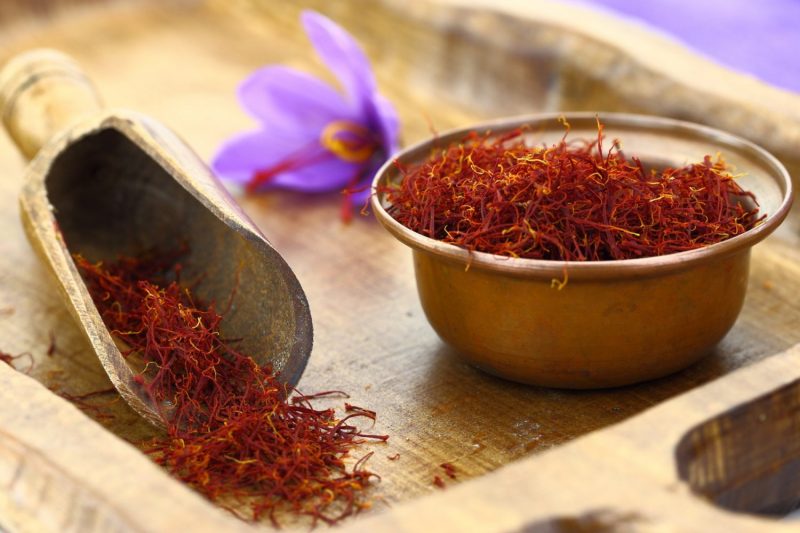
The historical homeland of saffron is the Middle East. Its name is of Arab origin and translates as "yellow leaf". Priests of the East used the plant for various ceremonies of religious themes. In ancient Greece, flower pestles were added to the water while taking a bath or covered in bed. In Europe, the spice appeared thanks to Italian and Swiss merchants. For some time, the plant was even grown in Switzerland - in the city of Basel. Today, Iran is considered the world leader in saffron production.
Indian saffron in all respects is the highest quality. It is produced in Kashmir, and only the most sophisticated restaurants or wealthy people can allow it.
Taste and how the spice looks
The famous saffron spice is the stigma of a crocus flower, which at one time belongs to the iris family.The plant has no stem at all, and flowers and leaves form directly from the bulb. From one tuber no more than three flowers can appear. Flowering lasts three days in early autumn. Saffron is the pestle of this very crocus, which consists of three thin tubes. In order for the spice to be of high quality, it must be collected on the day of flowering.

Saffron is harvested manually, as the plant does not tolerate rude attitude and technique. The collected flowers are laid out on the table, after which stigmas are plucked from them. Seasoning is dried in a special dryer at a temperature of about 50 degrees, and then placed in water. The last procedure is necessary for sorting. High quality and therefore the price of those pestles that sink to the bottom. Those stigmas that remain to swim on the surface of the water are considered the third grade and cost a little cheaper.
In order to get 1 gram of saffron, 150 flowers are required. Accordingly, for 1 kilogram of spice, it is necessary to process at least 150 thousand crocuses. 1 hectare of saffron plantation will “give” about 20 kg of finished spices.
The shape of saffron resembles a thread of dark red or deep brown color, there may be slight yellow blotches. Spice has a strong original flavor. The taste is bitter, spicy, there is a light honey hue.
People's advice:Dill seeds
The correct composition and useful properties
Due to its rich chemical composition, saffron is considered one of the most useful seasonings. The water-soluble carotenoids of crocetin give the seasoning a special touch.
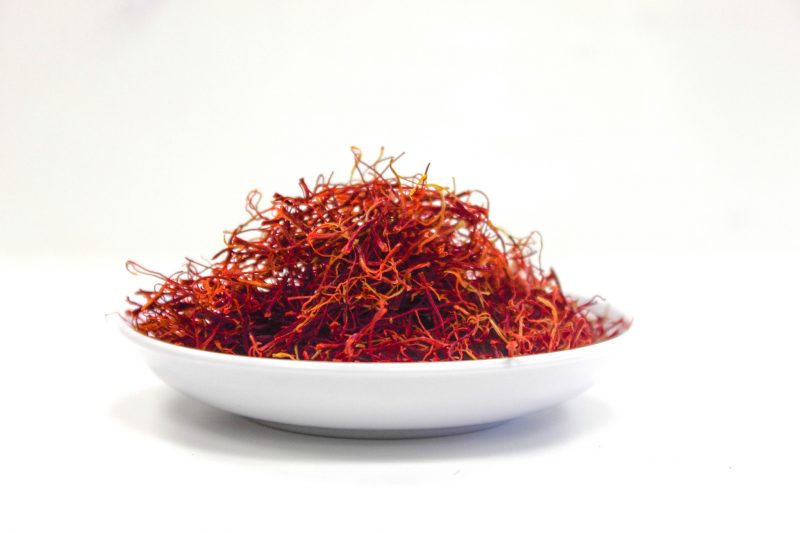
The composition of spices includes:
- vitamins of groups A, B, C, PP;
- calcium;
- magnesium;
- phosphorus;
- zinc;
- potassium;
- iron;
- manganese;
- essential oils - pinene, limonene, geraniol, saffronol.
Due to the large amount of carbohydrates, the calorie content of the product is 315 kcal.
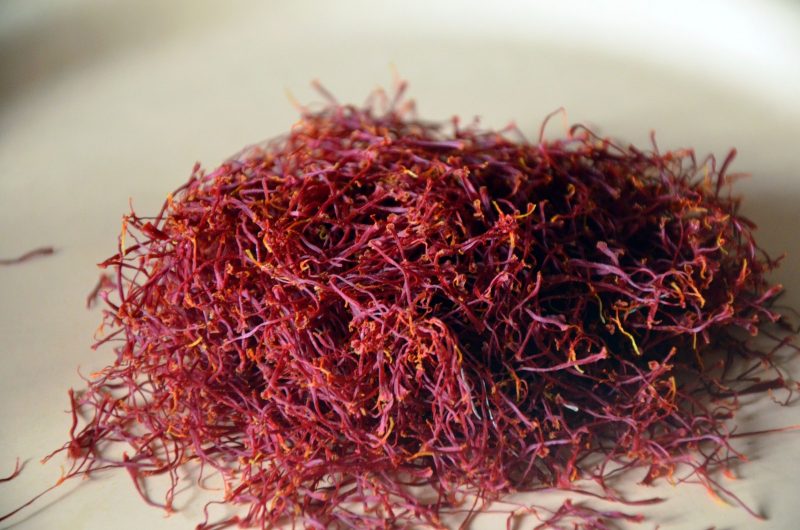
Useful properties of saffron:
- beneficial effect on the digestive system;
- elimination of various pains;
- prevention of depression, apathy and drowsiness;
- blood purification;
- normalization of the menstrual cycle.
If the spice is regularly used for cooking, then in a short time you can get rid of many diseases of the circulatory system. It helps cleanse the blood and liver, improves the condition of the skin, accompanies a good mood, and also adds strength and energy.
Studies have shown that the use of saffron seasoning accelerates the healing process of even the most serious diseases by 5-8 times.
- Saffron helps in the treatment of oncology.
- Cardiovascular disease is treatable even in serious condition.
- Restores the liver and kidneys.
- Improves brain function, renews skin and nails.
- Concomitant with natural weight loss by reducing appetite.
- Eliminates allergies and skin diseases.
- It treats diseases of the respiratory system, including asthma.
To achieve the desired result, seasoning must be used regularly.
What dishes are saffron added to?
Saffron seasoning has been widely used in cooking.
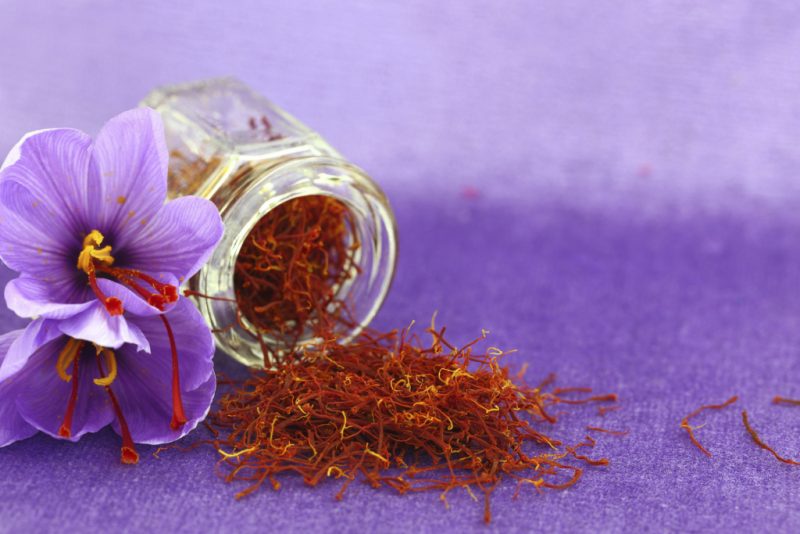
To achieve perfect taste, it can be added to the following dishes and drinks:
- Seasoning goes well with rice, so it is advised to add it to all dishes associated with this ingredient, including pilaf.
- Fish and meat - the aroma of spice goes well with products, giving them a bright shade. Can be added during braising or baking.
- In France and Eastern countries, spice is used to make fish, vegetable and milk soups. Saffron is able to give dishes a beautiful golden hue. Spice is an essential ingredient in Marseille soup, and in China it is added to traditional noodles.
- Confectionery - seasoning is used for baking rolls, cookies or sweet rolls.
- As a flavoring saffron can be added to liquors and wines. It is also used to make cocktails, tea or coffee.
Fans of this exotic seasoning know that in large quantities it can spoil the true taste of the dish. The taste of spices is not revealed immediately, so if you feel that there is not enough spices, do not rush to add it, let your culinary masterpiece brew a little. Saffron is also not recommended for mixing with other spices, there is a risk of spoiling the taste of the dish.
The use of seasoning in traditional medicine
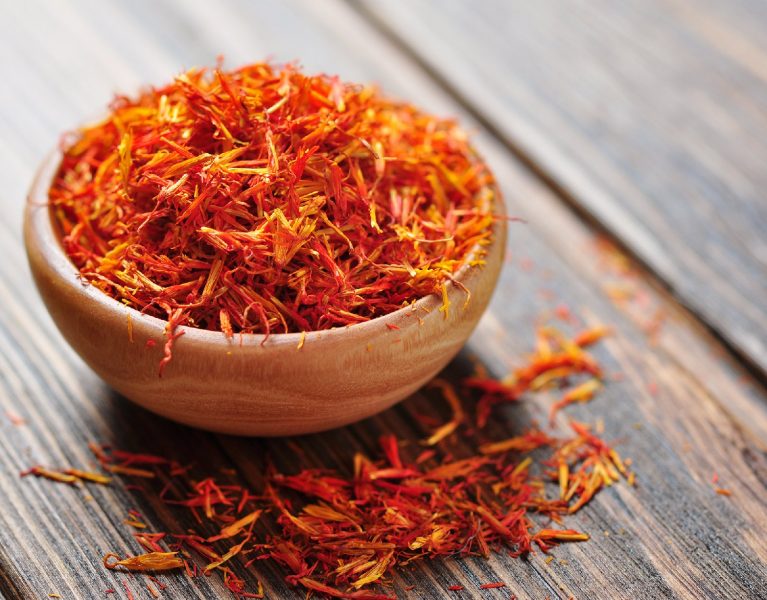
Traditional medicine involves the use of saffron for many recipes:
- A universal infusion, which favorably affects the whole body and improves memory, is prepared as follows: 1-2 ground veins are dissolved in a glass of warm water or milk. It is drunk daily.
- Another universal recipe provides an infusion of 15 veins of spice in 300 ml of hot water. The infusion is taken before meals 200 ml after the veins settle to the bottom.
- With cystitis, I advise adding 2-3 veins of saffron to cranberry juice, previously diluted with water.
- To cleanse the body, the following infusion is prepared: 3 veins of spices and 10 pcs. raisins are added to half a glass of water, insist overnight. Take twice a day for 2 months.
Contraindications and possible harm
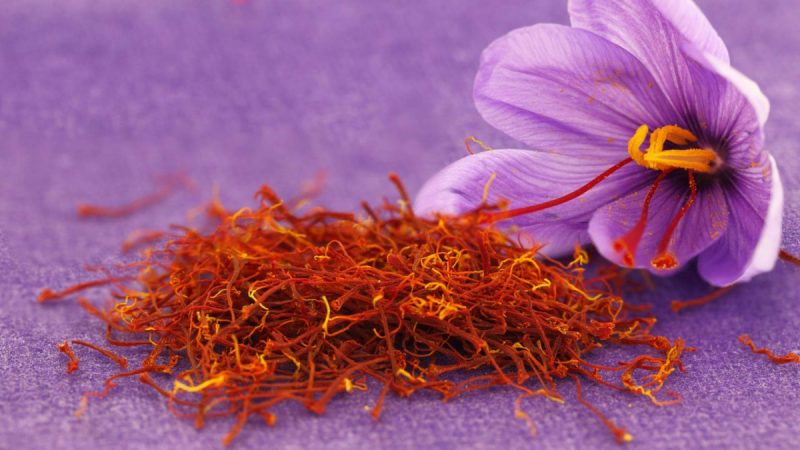
Despite its rich composition, saffron has a number of contraindications:
- period of pregnancy and lactation;
- high blood pressure;
- diabetes;
- diseases of the cardiovascular system.
In addition, it is worth sticking to a strict dosage. For one dish, 2-3 threads of spice are enough. In large quantities, it is toxic and can cause nervous agitation. In a year it is allowed to eat no more than 1 gram of seasoning.
How to replace saffron in cooking

Saffron is a seasoning that not everyone can afford. The most common analogues of spices are turmeric and safflower. Some sellers generally try to pass off their powder as the original saffron. However, spices differ in taste and a shade that is more reminiscent of orange.












